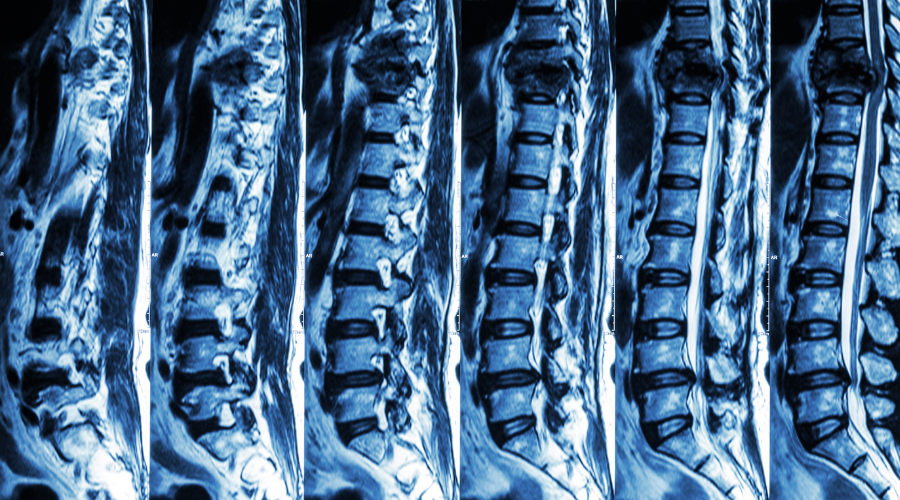What to Know About Spinal Cord Injuries
Justin Sheldon—February 19, 2022

As one of the most important—and sometimes underrated—parts of your body, your spinal cord is responsible for carrying nerve signals from your brain to each of your organs. These nerve signals control your breathing, digestion, heart rate, bowel and bladder function, and ability to move your extremities. This means that any injury to your spinal cord can have cascading consequences, many of which may not be immediately apparent.
Below, we discuss some common types of spinal cord injuries, your treatment options, and what you should do if you’ve suffered a spinal cord injury due to another person’s negligent or reckless behavior.
Contents
Spinal Cord Injury Side Effects
Symptoms of Spinal Cord Injuries
How Spinal Cord Injuries Are Diagnosed
Treatment Options for Spinal Cord Injuries
Other Types of Spinal Cord Injuries
What To Do If You’ve Suffered a Spinal Cord Injury
What Is a Spinal Cord Injury?
The spinal cord is around 17 inches long and looks a bit like a thickly-wrapped electrical cable. But instead of wires, the spinal cord is filled with nerves that relay signals and sensations between the brain and every other part of your body. The spinal cord is surrounded by layers of tissue, called meninges, and wrapped by a column of donut-shaped bones, or vertebrae, for protection.
In most cases, a spinal cord injury occurs when there’s a sharp or sudden impact to the vertebrae. This can break the bone, sending it sideways into the spinal cord where it can bruise, damage, or even sever the nerves. Some of the most common causes of spinal cord injuries include:
- Vehicle accidents
- Slip-and-fall accidents
- Sports injuries
- Gunshot wounds
- Surgical complications
- Infections like meningitis
- Autoimmune disorders (like multiple sclerosis or lupus) that can inflame the spinal cord’s nerve cells
Some spinal cord injuries can be healed, while others—especially those involving severe trauma to the nerves—may be permanent.
Spinal Cord Injury Side Effects
When you sustain a spinal cord injury, the nerves below the location of impact may be affected. In other words, the nerves above the injury can still communicate with your brain unimpeded, but the nerves below this spot may have trouble communicating or even be entirely unresponsive.
This means that someone who suffers a spinal cord injury to the neck may be far more affected than someone who suffers an injury to the lower back, even if the latter injury is more serious. Neck, or cervical, injuries may involve the nerves responsible for regulating breathing and heart rate, while lower back injuries may involve the nerves responsible for lower extremity movement as well as bowel and bladder function.
Some of the potential complications of a spinal cord injury include:
- Paralysis
- Disruption in your ability to regulate your breathing and heart rate
- Deep vein thrombosis (DVT), or potentially fatal blood clots
- Respiratory infections
- Urinary tract infections
- Impotence or other sexual dysfunction
- Inability to control one’s bladder or bowels, potentially leading to an ostomy or catheterization
Generally, the more severe the injury and the more nerves that are affected, the more likely someone is to suffer from multiple complications of a spinal cord injury.
Types of Spinal Cord Injuries
There are two main types of spinal cord injuries: complete and incomplete.
- A complete spinal cord injury is one that causes a total loss of function, or paralysis, below the level of the injury. Complete spinal cord injuries affect both sides of the body equally. Any injury that severs the spinal cord is likely to be a complete injury.
- An incomplete spinal cord injury causes only a partial loss of sensation or function below the level of the injury. The body and brain may still be able to communicate along some pathways, allowing a greater chance of recovery.
Symptoms of Spinal Cord Injuries
Symptoms can range widely depending on the location of the injury and whether it’s complete or incomplete. If you’ve sustained a blow to the spine and begin to notice any of the below issues, it’s important to seek medical attention as soon as you can.
- Persistent weakness or decreased sensation in your arms or legs
- Any changes in your ability to control your bowels or bladder
- Serious pain or a feeling of pressure in your neck or spine
- Any unusual lumps or bumps along your spine
- Trouble breathing or a feeling of “air hunger”
Fortunately, early treatment of spinal cord injuries can sometimes help minimize permanent damage.
How Spinal Cord Injuries Are Diagnosed
If you’re injured in an accident, emergency medical technicians will assess you to ensure that your breathing and heart rate haven’t been seriously affected by any injuries to your spine. They’ll also check your ability to move your limbs (unless another injury prevents this) and your ability to feel touch.
In other situations, especially if you seek treatment after an injury, you may undergo one or more of the following diagnostic tests:
- An X-ray, which can show broken or dislocated bones.
- A CT scan, which allows physicians to see any broken bones, blood vessel damage, or blood clots that could pose a risk.
- An MRI, which provides a view of the spinal cord and soft tissues surrounding it.
Depending on what these imaging tests show, further tests may be ordered.
Treatment Options for Spinal Cord Injuries
Treatment of a spinal cord injury can focus on both the short and the long term.
Short-term treatments may include emergency decompression surgery, steroid injections, cooling beds, and other therapies designed to heal the spinal cord, reduce inflammation, and minimize any further damage.
Long-term treatments will focus on learning to manage your spinal cord injury and reduce the risk of any potential complications. These can include:
- Learning to use assistive devices like a wheelchair, walker, or cane
- Using physical therapy to regain strength and mobility and to retrain the brain to move your body
- Relearn and recover the skills you need to care for yourself independently, from bathing and toileting to dressing yourself or driving a car
Other Types of Spinal Cord Injuries
Contusions & Compressions
Contusions and compressions are the two most common types of spinal cord injuries; and while they may not sound as serious as a severed spinal cord or broken neck, they can pose just as much risk of severe or permanent dysfunction.
- Spinal contusions bruise the spinal cord, causing bleeding and inflammation of nearby blood vessels.
- Spinal compressions involve pressure on the spinal cord, often from a vertebral fracture or hematoma.
Both contusions and compressions can permanently disrupt the nerve pathways, and because the nerve cells in the spinal cord—unlike other cells in the body—can’t regenerate themselves if they’re damaged or destroyed, these relatively-harmless-sounding injuries can constitute a medical emergency.
Cauda Equina Syndrome
This condition, named for the “horse tail” of spinal nerve roots near the tailbone, is a more chronic or long-term spinal injury that can cause a cascade of symptoms.
Cauda equina syndrome can result from compression to the nerve roots through a sudden injury, post-surgical complications, or even certain repetitive movements. Those suffering from cauda equina syndrome may experience serious sciatica pain, incontinence, weakness in the buttocks or thighs, or trouble walking.
Although it may come on gradually, cauda equina syndrome requires immediate decompression treatment to prevent permanent damage. And a physician’s failure to diagnose this condition (or writing it off as typical sciatica pain) can constitute medical malpractice.
What to Do If You’ve Suffered a Spinal Cord Injury
Contusions, compressions, and other spinal cord injuries can be devastating and affect just about every aspect of one’s daily life. It can be easy to underestimate the lifelong impact of these injuries, and insurance companies have a vested interest in settling as quickly and as cheaply as possible. Taking a settlement offer without seeking legal advice of your own could mean giving up funds you’ll need for future care.
If you’ve suffered a spinal injury as a result of someone else’s negligence, you have options. Contact the skilled attorneys at Breit Biniazan to set up a consultation to discuss your case and learn more about your legal options.
By Justin Sheldon
Partner
Justin Sheldon's law career of over ten years began with a sympathy for those who had been injured and a passion for representing those injury victims. With years of experience, ongoing legal education, and various awards winnings, Justin provides the expert and fierce legal representation that Virginia personal injury victims both require and deserve.
Categories:
Office Locations
Related Posts
Categories
We are personal injury attorneys
Fill out our contact form to speak to our experienced Virginia trial attorneys. Breit Biniazan has helped recover millions of dollars in cases. Learn how we can help you today.
